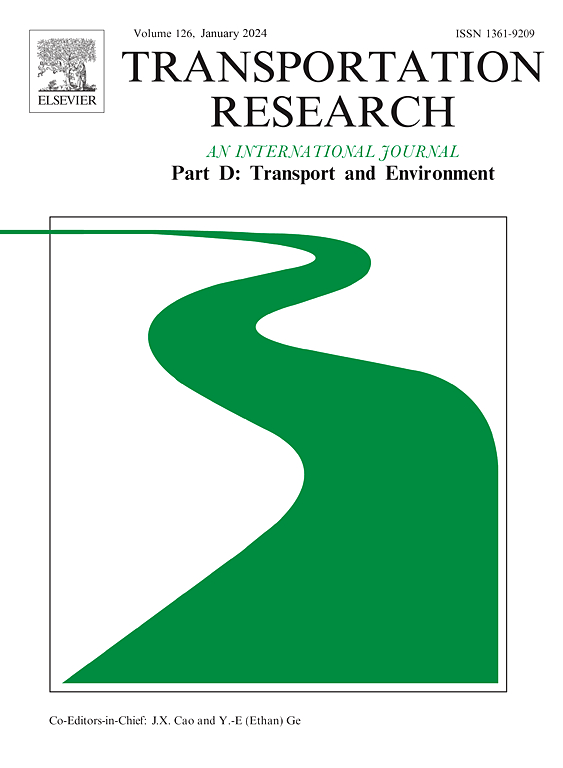Surrogate modeling for identifying critical bridges in traffic networks under earthquake conditions
IF 7.3
1区 工程技术
Q1 ENVIRONMENTAL STUDIES
Transportation Research Part D-transport and Environment
Pub Date : 2025-01-01
DOI:10.1016/j.trd.2024.104512
引用次数: 0
Abstract
Bridges are crucial for post-earthquake response. While seismic retrofit can improve bridge resilience, resource limitations necessitate prioritization of critical bridges for upgrades. Traditional methods for identifying critical bridges via seismic risk assessment involve computationally intensive traffic simulations. To expedite this process, this study proposes a “simulation-free” surrogate model using Markov random walk and random forest. Additionally, a combined bridge ranking method based on One-at-a-time, Sobol’ index, and Gini importance is introduced, benefiting from the rapidity of this surrogate model. Application to a case study of the San Francisco Bay Area Road network demonstrates a significant computational time reduction of 98% compared to simulation approaches and the ability to achieve good prediction performance with few training samples, reducing the effort in collecting training data and facilitating more rapid evaluation of the impact of bridges. Furthermore, the combined ranking method outperforms existing methods in identifying critical bridges for network performance enhancement.
求助全文
约1分钟内获得全文
求助全文
来源期刊
CiteScore
14.40
自引率
9.20%
发文量
314
审稿时长
39 days
期刊介绍:
Transportation Research Part D: Transport and Environment focuses on original research exploring the environmental impacts of transportation, policy responses to these impacts, and their implications for transportation system design, planning, and management. The journal comprehensively covers the interaction between transportation and the environment, ranging from local effects on specific geographical areas to global implications such as natural resource depletion and atmospheric pollution.
We welcome research papers across all transportation modes, including maritime, air, and land transportation, assessing their environmental impacts broadly. Papers addressing both mobile aspects and transportation infrastructure are considered. The journal prioritizes empirical findings and policy responses of regulatory, planning, technical, or fiscal nature. Articles are policy-driven, accessible, and applicable to readers from diverse disciplines, emphasizing relevance and practicality. We encourage interdisciplinary submissions and welcome contributions from economically developing and advanced countries alike, reflecting our international orientation.

 求助内容:
求助内容: 应助结果提醒方式:
应助结果提醒方式:


